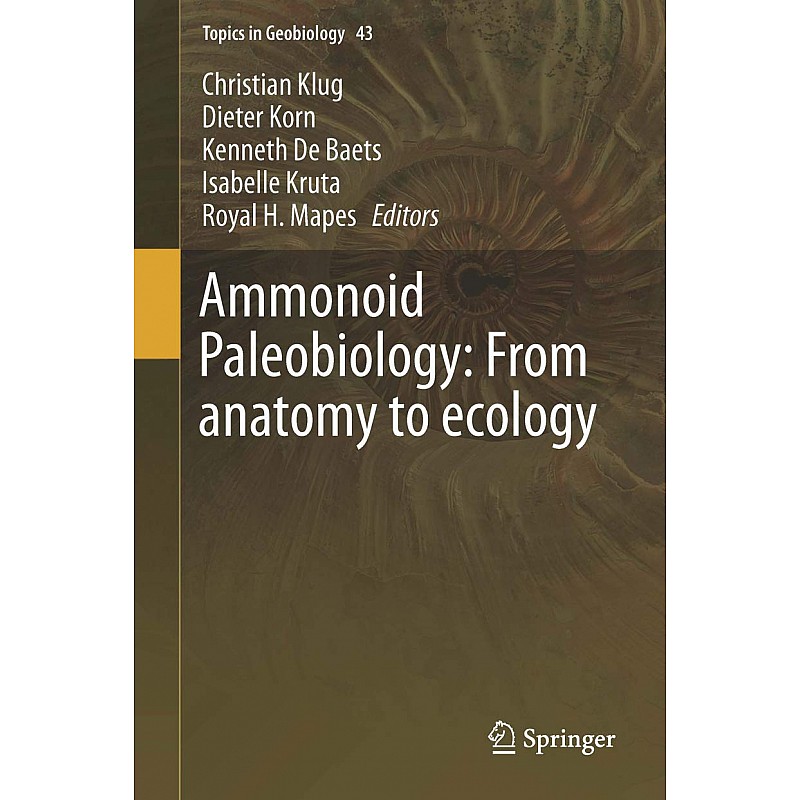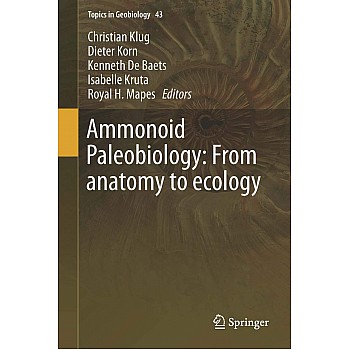Ammonoid Paleobiology: From anatomy to ecology: 43 (Topics in Geobiology)




- Stock: In Stock
- Brand: generic
- Model: 9401796297
- Weight: 0.80kg
- Dimensions: 12.00cm x 15.00cm x 5.00cm
- SKU: 9401796297
- ISBN: 9789402403961
🎉 Our Customer Benefits 🎉
| 💸 10% Instant Discount | Use code VLE10 at checkout to get 10% off (Max ₹250) |
| 🎁 ₹100 Wallet Credit | Get ₹100 credited to your wallet after successful order completion |
| 💼 GST Credit Available | Add your GST number at checkout to claim tax benefits. Update Now |
| 🏷️ Transparent Pricing | No hidden charges — what you see is what you pay |
| ✅ Warranty Included | All products come with warranty for your peace of mind |
| 🔄 7-Day Easy Replacement | Enjoy easy 7-day replacement for eligible products |
| 📦 Bulk Order Discounts | Special pricing available for bulk orders. Contact Us Now |
Description
Ammonoid Paleobiology: From Anatomy to Ecology
Welcome to our in-depth exploration of ammonoid paleobiology, where we delve into the fascinating world of these extinct marine mollusks. From their intricate anatomy to their ecological roles, ammonoids provide valuable insights into the ancient oceans and the processes that shaped life on Earth. Join us on a journey through time as we uncover the secrets of these enigmatic creatures.
Introduction to Ammonoids
Ammonoids were a diverse group of cephalopods that thrived in the oceans for over 300 million years, from the Devonian period to the end of the Cretaceous period. These shelled creatures were closely related to modern-day nautiloids and octopuses, and they played a significant role in marine ecosystems during their long evolutionary history.
Anatomy of Ammonoids
Ammonoids had a distinctive spiral-shaped shell that served as a protective covering for their soft bodies. The shell was divided into chambers by internal walls called septa, which created a series of gas-filled chambers that allowed the animal to control its buoyancy in the water column. Ammonoids also had tentacles and a beak-like mouth for capturing prey, much like modern cephalopods.
Evolutionary History of Ammonoids
The fossil record of ammonoids provides valuable information about the evolution of these creatures over millions of years. From simple, straight-shelled forms in the early Devonian to the complex, coiled shells of the late Cretaceous, the diversity of ammonoid shapes and sizes is staggering. Researchers have used these fossilized remains to piece together the evolutionary relationships of different ammonoid groups and their place in the tree of life.
Ecology of Ammonoids
Ammonoids occupied a wide range of ecological niches in the ancient oceans, from shallow coastal waters to deep-sea environments. Their diverse feeding habits and behaviors made them important components of marine food webs, with some species serving as predators and others as scavengers or filter feeders. By studying the distribution of different ammonoid species in the fossil record, researchers can reconstruct past marine ecosystems and understand how these creatures interacted with their environment.
Reproductive Strategies
Ammonoids had complex reproductive strategies that varied among different groups and species. Some species laid eggs in protective capsules, while others gave birth to live young. By studying fossilized ammonoid embryos and reproductive organs, scientists have gained insights into the reproduction and development of these ancient cephalopods.
Extinction of Ammonoids
Despite their long evolutionary history, the ammonoids met a catastrophic end at the close of the Cretaceous period. The mass extinction event that wiped out the dinosaurs also took a heavy toll on marine life, including the ammonoids. While some cephalopod lineages survived and gave rise to modern-day species like the nautilus, the once-dominant group of ammonoids disappeared from the oceans, leaving behind a rich fossil record for scientists to study.
Specifications
| Additional features | |
| Generic Name | Books |
| ISBN | 9789402403961 |
| General | |
| Condition | new |




